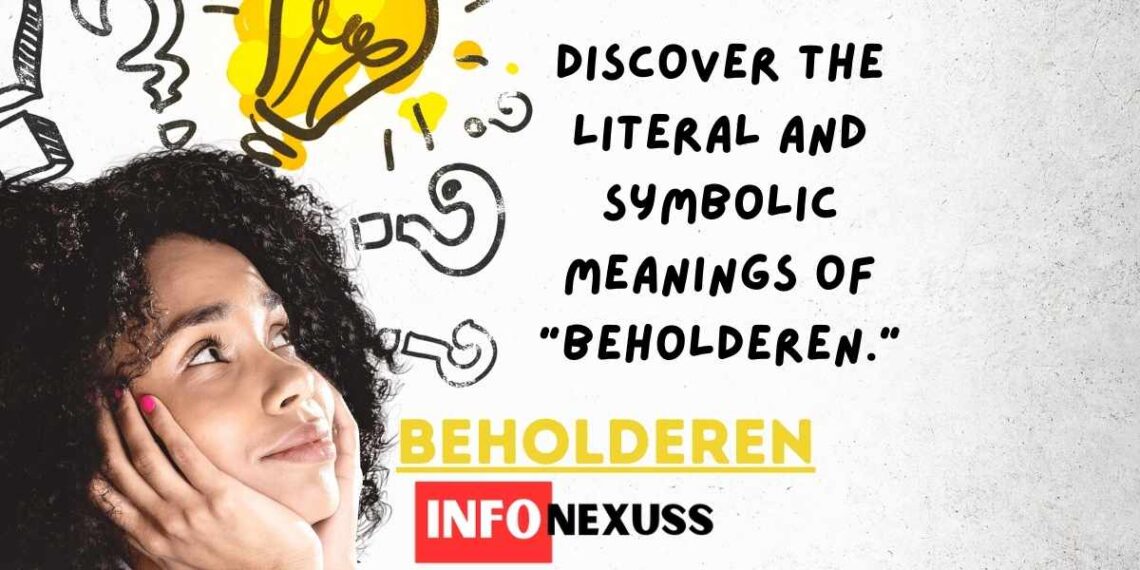
Beholderen: What’s Inside Your Mind’s Container?
Have you ever wondered if the thoughts, dreams, and memories swirling within your mind have their own hidden space? The Danish and Norwegian word “beholderen” invites us to think about the secrets we hold within ourselves and how we choose to reveal them to the world.
This blog post will delve into the fascinating word “beholderen.” We’ll explore its literal translation as “container,” its everyday usage in Danish and Norwegian, and the deeper metaphorical meanings it can hold. By the end, you’ll have a richer understanding of this word and perhaps a new perspective on the inner workings of your own mind.
Table of Contents
The Literal “Beholderen”
In Danish and Norwegian, the word “beholderen” directly means “the container”. This common noun refers to any physical object specifically made to hold or store items. Picture a simple lunchbox, a jewelry box, or even a large storage bin – they can all be called “beholderen” in the right context. Let’s see how this word comes alive in everyday Danish and Norwegian conversations. In Danish, you might hear someone say “Jeg satte maden i beholderen” (I put the food in the container). In Norwegian, a similar phrase would be “Hun la smykkene sine i beholderen” (She put her jewelry in the container).
Grammar-wise, remember that “beholderen” uses the definite article (meaning “the”), so we’re usually talking about a specific container, not just any container. If you wanted to talk about containers in general, you’d use the plural form, “beholderne”. “Beholderen” functions just like other nouns in a sentence, acting as the subject, object, or object of a preposition.
Beyond the Literal: “Beholderen” as a Concept
While the primary meaning of “beholderen” in Danish and Norwegian is straightforward (a physical container), it’s important to be aware that the word can possess deeper, metaphorical meanings. You might encounter it used in a more symbolic sense in certain online articles or literature. Let’s explore some ways “beholderen” can transcend its literal definition:
The Mind as a Container
Think of your own mind as a vast and mysterious container. Within this “beholderen” lie your thoughts, memories, emotions, and experiences. It’s a place where ideas can be stored, forgotten, and perhaps even rediscovered.
The Power of the Unknown
A closed container piques our curiosity! It represents the unseen– potential, secrets, or things waiting to unfold. In the same way, we might envision our inner world as a “beholderen” holding hidden talents, unspoken dreams, or future possibilities.
A Place of Safety
The concept of a container can evoke feelings of security and protection. Sturdy containers keep their contents safe from the elements. Similarly, our minds might act as a “beholderen” to shelter our vulnerabilities and delicate thoughts from the outside world.
Self-Help Inspiration
Motivational literature or self-help resources might use the image of a container as a metaphor for personal growth. You might encounter phrases like “open the beholderen of your mind” or “release what no longer serves you from your inner beholderen”. While thought-provoking, remember that these phrases aren’t literal translations from Danish or Norwegian but figurative language intended to inspire.
Key Takeaways:
- The metaphorical interpretations of “beholderen” invite us to reflect on our inner worlds and the potential for personal growth.
- Appreciating the word’s literal Danish/Norwegian meaning adds a richer layer to understanding these symbolic uses.
- If you’re primarily interested in learning about the Danish or Norwegian language, prioritize resources that keep a clear distinction between the literal definition and symbolic interpretations.
“Beholderen” in the Wider World
While “beholderen” mainly translates to a simple and practical container, the concept finds expression in the world through specific places, artistic creations, and cultural echoes. Let’s explore some examples:
Echoes in Proper Nouns
- Beholderen Theater (Norway): This independent theater in Copenhagen, Denmark holds a reputation for staging thought-provoking and experimental productions. Its name subtly hints at the idea of the mind as a container for ideas and potential.
- “Beholderen” (Sculpture): You might encounter modern or abstract sculptures titled “Beholderen.” These artworks likely play with the symbolism of hidden depths, inner spaces, and the power of what remains concealed.
Danish/Norwegian Cultural Connections
- The Practicality and Purpose of Vikings: Ancient Vikings relied heavily on well-crafted chests and containers to store essential supplies and treasures during their long journeys. Some of these containers featured intricate carvings, suggesting that even practical objects could possess greater significance.
- Scandinavian Design Legacy: The clean lines and functional emphasis of Nordic design might reflect a broader cultural appreciation for well-designed containers in both the physical and mental realms. Could this design aesthetic be connected to a desire to organize and contain thoughts or ambitions in an efficient way?
- Whispers from the Past: Scandinavian folktales and mythology often feature hidden treasures, secret objects locked away in chests or boxes. While not directly connected to the word “beholderen,” these stories demonstrate a longstanding fascination with the symbolic power of containers across cultures.
Conclusion
Throughout this exploration, we’ve discovered the multifaceted nature of the word “beholderen.” On a fundamental level, it means “the container” in Danish and Norwegian, serving as a common noun for everyday objects. We learned how to use it in sentences and explored its grammatical functions.
However, “beholderen” also holds deeper potential. It invites us to view our minds as containers of thoughts, dreams, and untapped possibilities. The symbolism of containers resonates across cultures and throughout history, reminding us that there’s always more to discover— both within ourselves and in the words we use.
Perhaps the next time you hear or read the word “beholderen,” you’ll pause for a moment. Consider what secrets your own inner “beholderen” might hold. What forgotten memories or potential might be waiting to be revealed? The power of language, even in its simplest forms, is that it can unlock new avenues of self-understanding and reflection.
You May Also Like

What is Vaçpr and How Can It Enhance Your Communication?
April 25, 2024
Webcord Virus: Protect Yourself | Removal Guide Included
April 13, 2024

